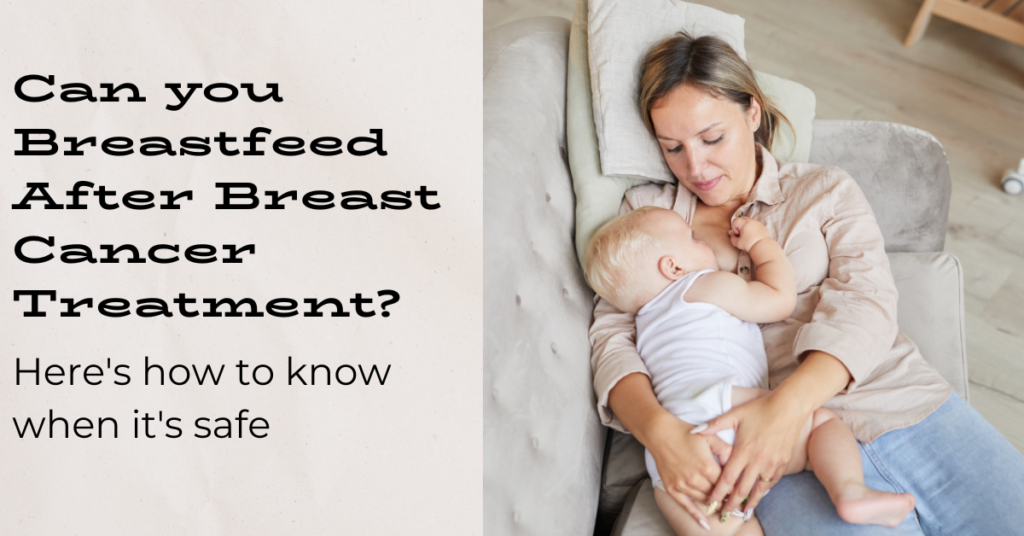Breast cancer is tough enough to handle on your own, but it’s a whole other story as a new mom too. Many women have questions about when and when not to breastfeed as they recover. It’s crucial to know breast cancer and breastfeeding facts to help clear up any confusion. It’s also important to keep in mind that every situation is different, so be sure to ask your doctor for personalized advice.
After chemotherapy and certain medications
Chemotherapy and long-term medications like aromatase inhibitors, tamoxifen, or trastuzumab can end up in breast milk and adversely affect your baby’s ability to fight infection. They can interfere with cell division and growth during this critical time in your baby’s life. However, there are instances where women can breastfeed normally as long as they wait a certain amount of time after their treatment is finished. Some drugs may require a couple of weeks to clear out of your system while others may require months. If your treatment is still in process, there’s a possibility that your doctor will allow you to stop for a certain amount of time in order to breastfeed, then resume later. More often than not, though, pumping and dumping is often the safest option.
After surgery or radiation
Women who’ve had a single mastectomy may still want to breastfeed with the other breast. Milk ducts may also remain intact after a lumpectomy, but they may not be as functional. It really depends on where the surgery was performed and if the milk ducts and nerves were damaged at all. Oftentimes, radiation treatment is needed after a lumpectomy and it may reduce the amount of milk produced or stop it completely. This may require you to supplement with formula to meet your baby’s nutritional needs. One way to handle these types of situations is to pump and store as much milk as possible before the surgery. This guide provides some details on how to prepare for the surgery and store milk for future use. If this is not a possibility, an oncologist or lactation expert may be able to help you figure out a plan for you and your baby.
Breast milk banks
In less than ideal circumstances, ordering milk from a milk bank is a great option to consider. For example, The Human Milk Banking Association of North America has 31 locations throughout the U.S. that are able to ship out-of-state. Established non-profit milk banks ensure that the milk comes from healthy women, is free of bacteria, pasteurized and handled in a completely sterile environment. These banks usually designate the milk to those who have premature and sick babies, but they can work well for women who’ve gone through cancer treatment or are still in process. These banks require a doctor’s prescription and are sometimes covered under health insurance. There are many milk banks that fundraise so that the cost can be covered for some women.
Nursing Tips
Breastfeeding is no easy feat- it takes a lot of energy and patience. There are plenty of ways to make the process easier. One rule to remember is that the more you breastfeed, the more milk you’ll produce. Though, this is more of a challenge with women who are recovering from cancer treatments. This is where a supplemental nursing system (SNS) can be helpful. An SNS device tube attaches to a bottle of formula, but the end of it hangs on the nipple so that it can simulate real breastfeeding. While the baby gets formula from the tube, it also helps stimulate milk production at the same time. Many kinds of nursing bras may be uncomfortable to wear due to asymmetry or uneven milk production. This issue is often best fixed by placing a silicone prosthesis within the bra.
Knowing breast cancer and breastfeeding facts will ensure your baby’s health and safety above all else. Remember, breastfeeding is only a part of caring for your child; there is no reason to feel guilty about not being able to use your own milk. As a cancer survivor and new mom, there is so much more to look forward to!
